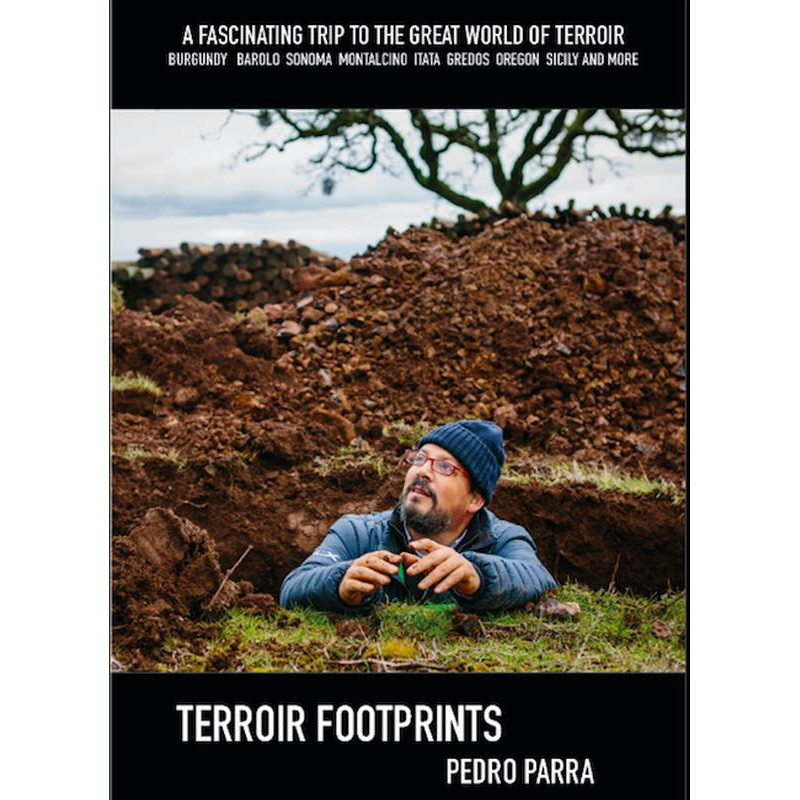
| Title | Terroir Footprints – A Fascinating Journey to the Great World of Terroir |
| Author | Pedro Parra |
| Publisher | Alit Wines |
| Date | May, 2021 |
| ISBN | 978-1-889937-46-5 (English Hardcover) |
| Pages | 444 |
| Synopsis | Terroir Footprints by Pedro Parra is an essential read for wine enthusiasts. Explore Burgundy, Barolo, Sonoma, and more through the eyes of a leading terroir expert. With over 20 years of experience, Parra reveals the deep connection between soil and wine. This book is a must-have for anyone passionate about wine terroir and the intricacies that define world-class wines. |
| Shop | Terroir Footprints: Un viaje fascinante en el mundo del terroir Terroir Footprints: A Fascinating Journey to the Great World of Terroir Un vin, une roche: Un voyage fascinant au coeur des plus grands terroirs |
In part autobiography about Parra’s roots and his work as terroir consultant and winery owner, in part a geology guide about terroir, typicity, and wine. Highly technical (at times) but also a very personal book in which Parra shares his love for film and music (jazz in particular).
Greatly enjoyed reading (and will have to read the geology bits no doubt a few more times to digest) while listening to the accompanying tunes and appreciating some of Parra’s wine suggestions.
A warm recommendation.
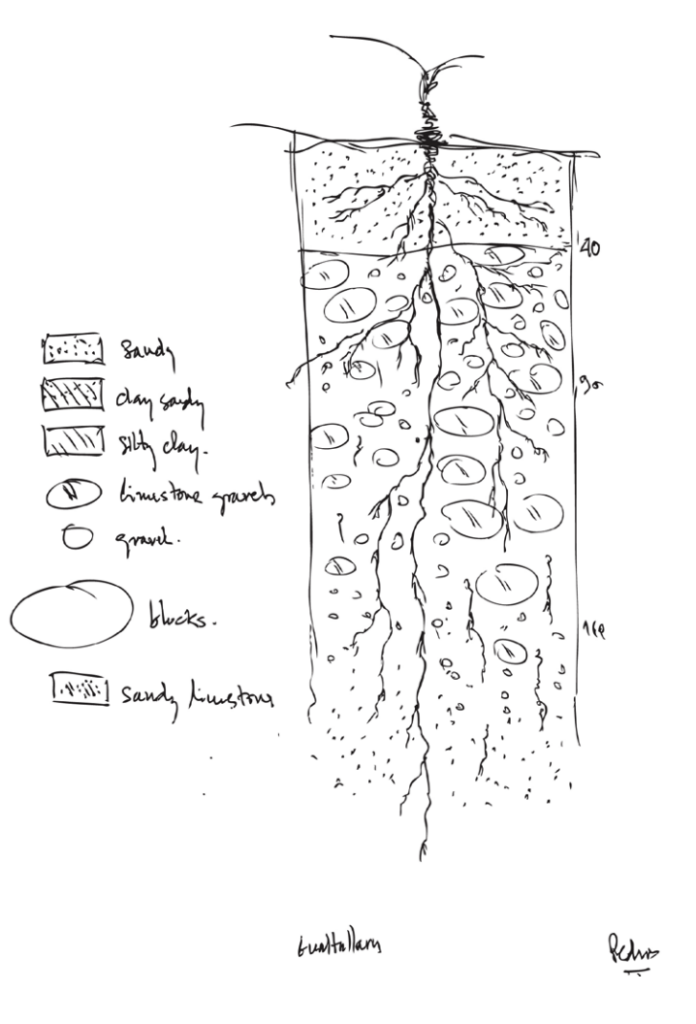
About the Author
From the book cover – Pedro holds a PhD in Terroir Viticoles from the Grignon Paris Center of Agriculture, with 18 years experience in French, Italian, Spanish and American terroirs, including Burgundy, Barolo, Rioja, Ribera del Duero, Montalcino, Bolgheri, Napa, Sonoma, and Oregon. As a highly respected consultant working in several countries and terroirs, Parra brings an open mind and vision to winemakers and viticulturists alike. Today he is considered one of the leading terroir experts in the world, working with clients like Louis Michel Liger-Belair, Jean Marc Roulot, Biondi Santi, Argiano in Montalcino and Comando G in Spain among others.
Parra founded Pedro Parra Family Wines in 2013, located in Itata, Chile, not far from where he was born and grew up.

For updates
Also on WordPress and LinkedIn (buth perhaps no longer active).
- linkedin.com/in/pedro-parra-88248a2a
- pedroparrachile.wordpress.com (latest post 2012)
Location
- Bodega Pedro Parra y Familia (Maps)
Where to find his wines
About the Book
The first five chapters cover his early career, getting started as wine consultant in Chile and the first 10.000 pits (2004-2007). Chapter 6-10 about working the new Chile (Itata) and working internationally (Argentina, Italy, Spain, Canada, US). The final chapters are case studies where Parra zooms in on specific terroir and discusses
- Marco Marengo (Barolo)
- Rose & Arrow (Eola Amity Hills)
- Domaine Roulot (Meursault)
- Commando G (Gredos)
- Comte Liger-Belair (Vosne Romanée)
- Altos las Hormigas
The book ends returning to the topic of the New Chile and the future of wine making.
Chapter 1 – Early Years
About growing up in Concepción, films and music, learning French at the Alliance Française, studying Forest Engineering at the local university, where he would find his first job, buying a saxophone and starting a band, going abroad (1997) to study Remote Sensing and Geographic Information Systems in Montpellier, France.
Chapter 2 – Master
Covers his year in Montpellier and Paris (INA Grignon), learning from soil experts like Michel-Claude Girard, tasting his first glass of wine, returning to Chile, and the opportunity to return to France to continue his studies sponsored by Concha y Toro (2001).
Chapter 3 – PhD
About his years as PhD student, the teachings from Pierre Becheler, visiting Bordeaux and Burgundy, and learning how to taste wine, and meeting Louis-Michel Liger-Belair (chapter 15).
Chapter 4 – Terroir Consulting
About attending Vinexpo and meeting Marcelo Retamal, starting his career as consultant, life and living in Paris, and, in some detail, about soil and geology (micro terroir) and graduating with Aurelio Montes in the jury.
- Marcelo Retamal
- Aurelio Montes
Chapter 5 – Chile
About working with Retamal, Rodrigo Soto (Matetic), NVDI (Normalized Difference Vegetation Index), consulting for Montes (mentions the plan to wite a book about the terroir of Apalta) after which many other Chilean wineries followed (Montgras, Seña), returning to Concepción, by which time he had observed more than 10,000 pits in Chilean vineyards and his palate started to recognize the terroirs. Reflects about 2008: no instagram and no wines from other countries on the national market.
Chapter 6 – Altos las Hormigas
About meeting Alberto Antonini and starting consulting outside of Chile, first in Mendoza (which concentrates 85% of high-end wine production compared to a distributed landscape with no local market for small avant-garde producers in Chile). As before in Chile, the culture of studying the soils did not yet exist in Argentina at the time (2008); about Sebastian Zuccardi, Altos Las Hormigas and the “Terroir Project” for the Uco Valley, tasting every corner (200,000 ha) to find complexity (typically lacking in the alluvial/colluvial soils), to find limestone (Jardín Altamira).
Parra starts to give talks on terroir – from New York to Tokyo, ranging from Vancouver, London, Madrid, California, Hong Kong, San Francisco, and Sao Paulo amongst other places – which would form the basis for this book.
- Alberto Antonini: Renaissance man by Adam Lechmere, Club Oenologique – 15 January 2024
- www.altoslashormigas.com/en/about-us
- Terroir Project – Altos Las Hormigas
- Sebastian Zuccardi
- Cork Talk with Sebastián Zuccardi (Tim Atkins)
- Understanding the Terroir Project, An Interview With Pedro Parra (YouTube) – Mar 5, 2013
- Jardin de Hormigas by Pedro Parra (YouTube) – May 17, 2024
Chapter 7 – Italy
About the New Chile movement for terroir-driven wines (chapter 17); about designing vineyards, organizing trips to wine regions in Europe; exploring the terroir of Poggiotondo; ECM, clay types 1:1 and 2:1 and Marcolini chocolate.
- Poggiotondo (Chianti Montalbano)
- Las arcillas del suelo, esos minerales tan especiales, Marisol Garrido Valero
- Pierre and the Chocolate Factory: A Visit to Pierre Marcolini
Over the years I’ve learned that geology is very democratic. It was formed in a wonderful way all across the planet, and it is possible to find great places, but also very bad ones, all over.

In the world of wine one can basically take three very different roads. There is the commercial road, related to supermarket wines, which are easy to drink, with lots of technical intervention and without terroir expression. (…) Then there is the group of high-quality wines, ripe and round, that to express rather black fruits (…) generally born from soils dominated by clay and silt (…) mainly on terroirs without rocks. And (…) those wines with character, acidity, tension, generally dominated by red fruits, where the word ‘complexity’ is real. Wines that deliver a challenging experience on the palate, tart and astringent, and with what many would call minerality. This rather niche wines, are tougher to drink and to understand and ask for a better trained palate.
Chapter 8 – Toscane
About Alan York, working in Sting’s vineyards in Tuscany (Il Palagio), and about David Scholefield’s Okanagan Crush Pad project.
“It’s all about the quality of life,” Alan used to say while we enjoyed mozzarella and drank Sister Moon, one of the vineyard’s first wines.
- Altos Las Hormigas Terroir Project: An Introduction to the Biodynamic Concept with Alan York (YouTube) – Jul 3, 2012
- Sting, Trudie Styler and Alan York Discuss Sister Moon Wine | Food & Wine (YouTube) – Feb 23, 2011
- What makes Okanagan Valley terroir and wines unique: David Scholefield interview, Okanagan Crush Pad (YouTube) – 80 Harvests & South America Wine Guide – Jun 2, 2017
Chapter 9 – Pedro Parra Family Wines
About visiting Barolo (Maria Teresa Mascarello) and the inspiration to become a wine producer, Itata, ancient granite rocks, país and cinsault (Luyt).
- Maria Teresa Mascarello
- Louis-Antoine Luyt
- Itata, el valle madre del vino chileno! (YouTube) – Aug 18, 2023


Chapter 10 – Terroirs
About limestone terroirs (Chambolle Musigny, Settesoli Sicily, Cantina Argiano, Mriya Crimea); granite and alteration (Parra, Itata); gneiss: (Ramiiisol, Virginia); schist (Alkina, Barossa Valley); galestro and albarese (Chianti Classico, Montalcino – Giulio Salvioni); basalt (Hamel Family Wines)
- Chambolle Musigny & Frédéric Mugnier
- Cantina Argiano | @argiano1580
- Ramiiisol
- Polygon-Project (Alkina Wine Estates)
- Giulio Salvioni
- Hamel Family Wines

Schist concentrates grapes and wines, making big mineral wines. You need to try wines from Douro, Côte Rotie or Priorat to understand the tipicity provided by a Schist = power mineral and sometimes heavy wines.
Chapter 11 – Marco Marengo (Barolo)
About Barolo (Marco Marengo, Morescalchi; Cavalotto, Conterno, Altare, Vietti, Mascarello) and a case study about Brunate and Bricco delle viole (and the “elevator” effect).
silt + sand +limestone + heat + dryness = cement = rock effect = minerality
I call the latter the “elevator” effect, and is maybe one of the five most important things I have learned in my terroir career. That is, the real depth of the soil-rock system varies depending on the climate-year, therefore “acting” as a deep or semi-deep soil in humid years and, as dry, hard and rocky in dry and hot years.

Chapter 12 – Rose & Arrow (Eola Amity Hills)
- Rose & Arrow | @roseandarrowestate
- Mark Tarlov, Hollywood Producer Turned Oregon Vintner, Dies at Age 69 by Tim Fish, Wine Spectator – Aug 11, 2021
- Wine Searcher: Rose & Arrow Estate
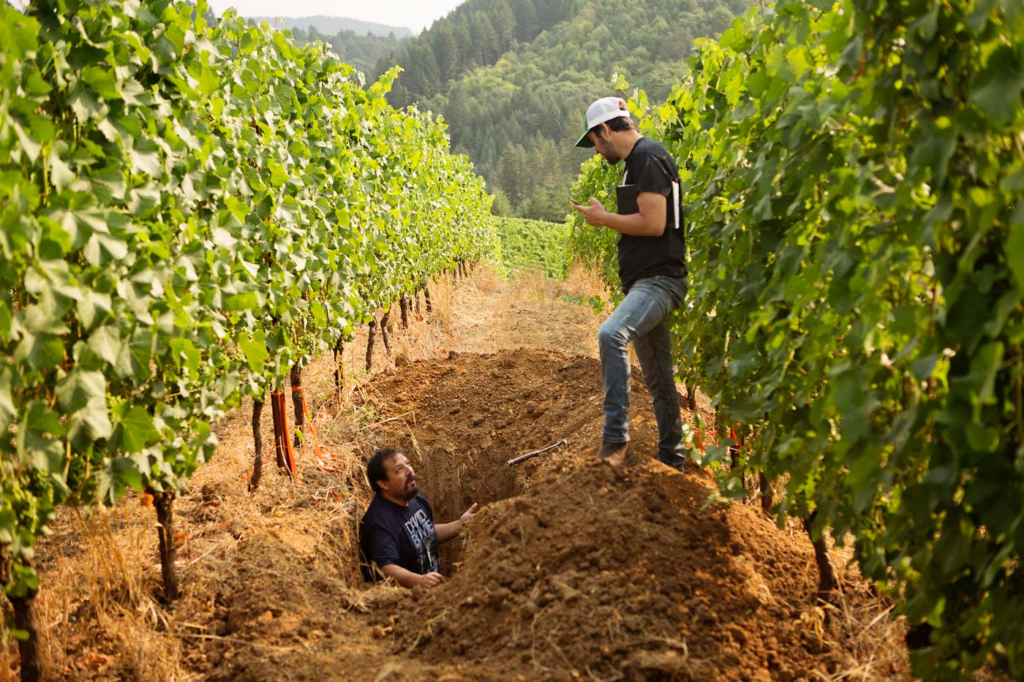
Chapter 13 – Domaine Roulot
- Jacques Lardiere (Louis Jadot)
- I’ll Drink to That: #341
- Wine’s Leading Man Sets Down His Glass (Eric Asimov, NYT)
Chapter 14 – Comando G
G from Gredos, Granite and Garnacha.
And so, to me, Spain today is the most dinamic wine country in Europe.

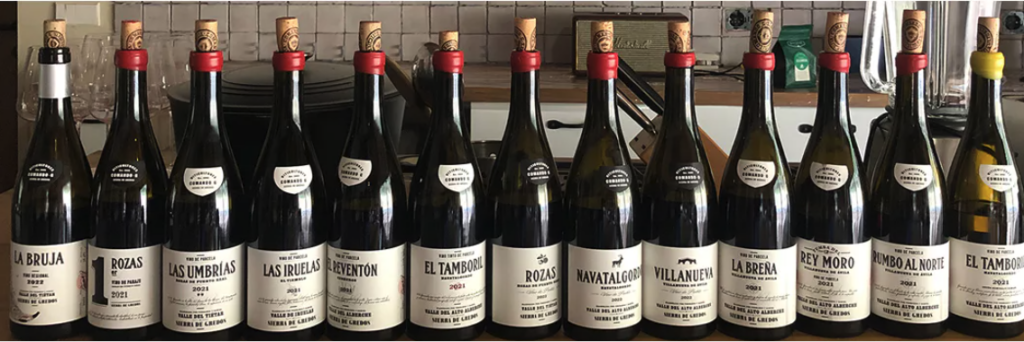
Chapter 15 – Comte Liger-Belair
Vosne Romanée, Clos du Château & Aux Reignots.
I met Louis Michel in 2002, at a time when he still didn’t wear his red trousers.
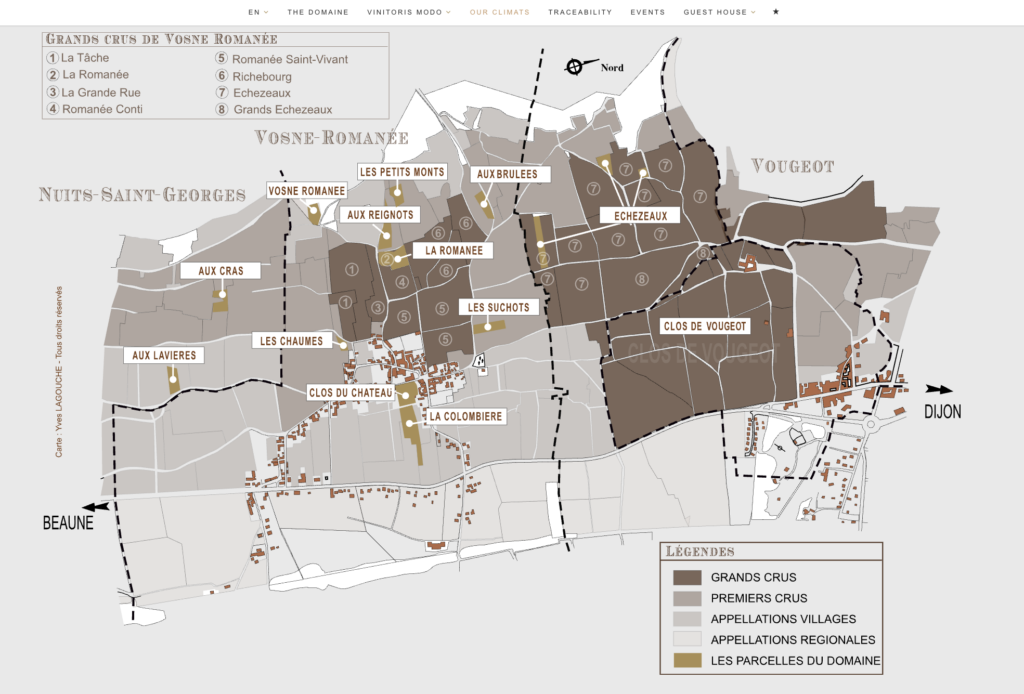
Chapter 16 – Altos las Hormigas
(…) one of the most outstanding terroirs in South America, Gualtallary, where currently the best Argentinian wines are produced.
- Altos las Hormigas (ALH) | @altoslashormigas
- Wine-Seacher: Altos Las Hormigas
- Jardín de Hormigas . Altos Las Hormigas (YouTube)
Chapter 17 – The New Chile
About working as a consultant in Chile, 15.000 pits dug all along the country, and the intimacy of pit conversations.
- limestone – absent (except for some calcareous gravels in the Andean sectors of Limari, Aconcagua, Maipo, and Cachapoal river valleys)
- granite – Coastal Range (Aconcagua, Leyda, Casablanca, Paredones, Maule, Cauquenes, Itata, Biobío, Malleco) and Atacama valleys (Elqui, upper Limarí and Choapa)
- volcanic – Aconcagua, Maipo, Cachapoal, Colchagua; not the best terroir; vast majority in last alterite phase or transformed into soil, especially clays, generally poor, yields raised via irrigation and fertilization. Vineyards with short lifespan.
Chile has 2900 volcanoes, 80 of them active, all in the Andes
- other rocks: schists (pizarra) classified as poor and used for timber. High potential but no investement.
Chile and its Future
- A growing interest for the development of artisenal wines
- A growing interest for terroir
- A growing international interest for the new Chile (distributors and sommeliers)
- A growing development of diversity
The new Chile
- Viñedos de Alcohuaz – Elqui Valley (Marcelo Retamal; 2007-2025)
- Viña Santa Carolina – Alto Cachapoal Valley (Andrés Caballero; 2005-2023)
- carolinawinebrands.com | santacarolina.cl |@carolinawines
- VSC Dolmen (discontinued)
- carolinawinebrands.com | santacarolina.cl |@carolinawines
- Viña Ventisquero – Apalta Valley (Felipe Tosso)
- www.ventisquero.com | @vventisquero
- Pangea, Obliqua
- www.ventisquero.com | @vventisquero
- Viña La Rosa – Peumo, Cachapoal Valley (Gonzalo Carcamo)
- Clos des Fous – Alto Cachapoal Valley (Albert Cussen, Paco Leyton, Pedro Parra, François Massoc [Massoc Frères, Aristos]; 2009)
- Garage Wine Co.
- El Viejo Almacen de Sauzal (Renan Cancino)
- Roberto Henriquez
- Rogue Vine
- Andes Plateau
- Viña Koyle
- Vinos Laberinto
- Bodega Montsecano
- Carter Mollenhauer Wines
- Vinos de Patio
About the Music
Each chapter opens with a jazz song
- Gentle Piece – Kenny Wheeler
- Baba – George Adams
- The Eye of the Hurricane – Herbie Hancock
- Now’s the Time – Charlie Parker
- Uncle Remus – Frank Zappa
- Spiral Dance – Keith Jarrett
- Parker’s Mood – Archie Sepp
- Red Clay – Freddie Hubbard
- When god created the Coffeebreak – Esbjorn Svensson Trio
- Footprints – Miles Davis
- Alfie’s Theme – Sonny Rollins
- Days of Wines & Roses – Dexter Gordon
- Resolution – John Coltrane
- In ‘n Out – Joe Henderson
- Exit Music (for a film) – Brad Mehldau
- Time will Tell – Art Blakey & the Jazz Messengers
- Are you going with me? – Pat Metheny Group
For those on Spotify, there is a Terroir Footprints playlists (amongst others) by Pedro Parra
About the Artwork
The artwork in the book and on the labels is by José Dumay.
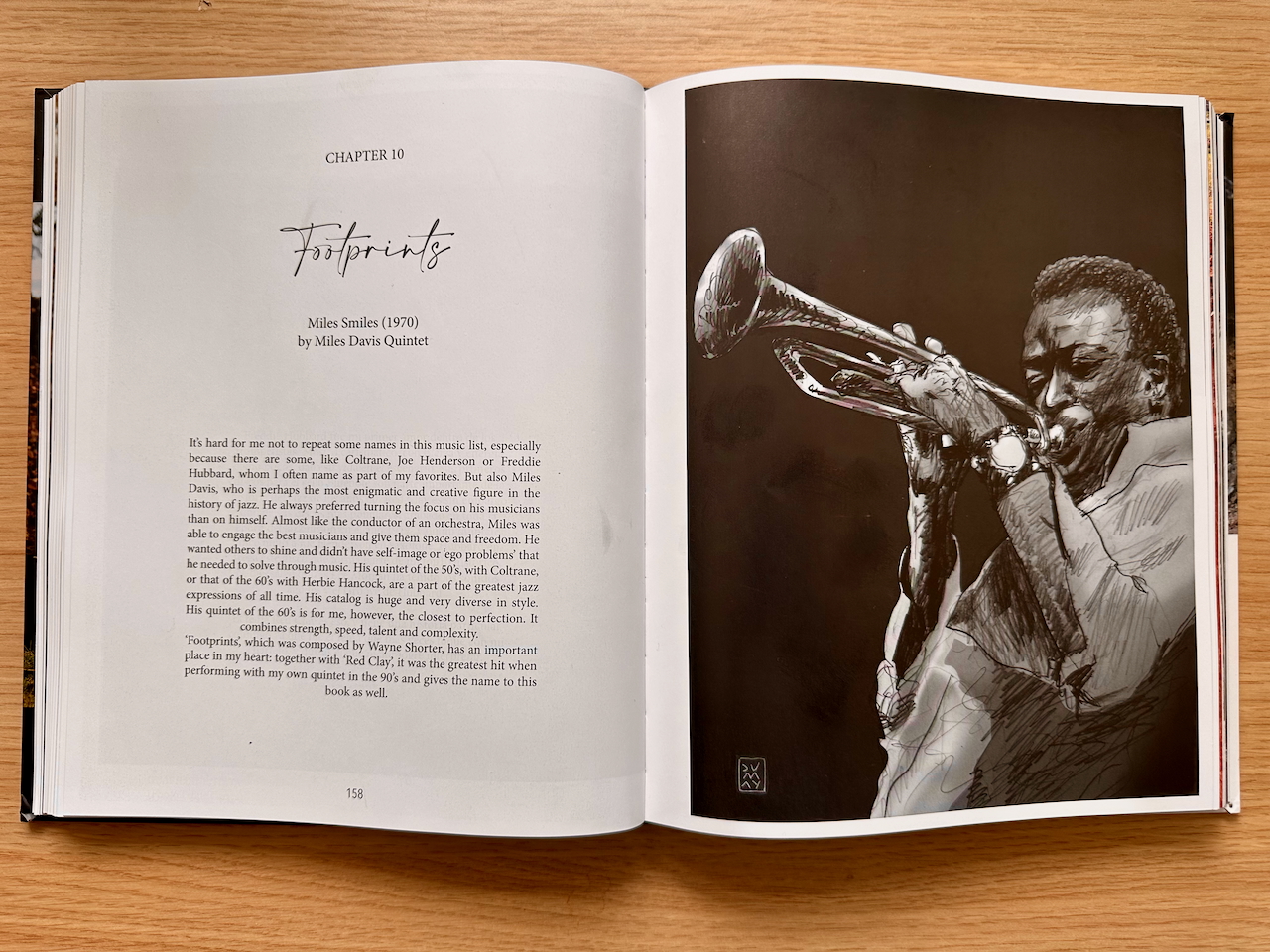
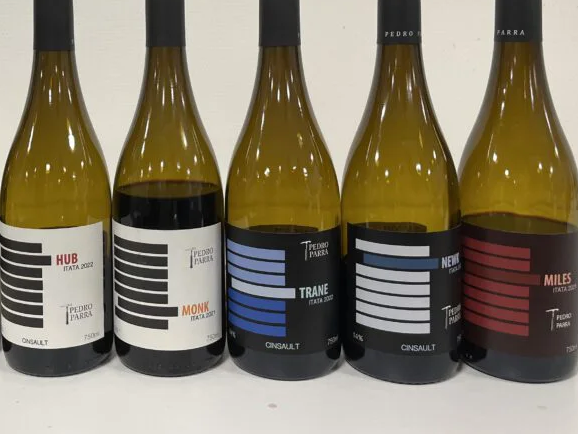
Articles and Interviews
- Interview with Pedro Parra by Tim Atkin – February 2010 (originally published in Decanter)
- Reinventing the “Flying Winemaker” by Megan Krigbaum – May 2018
- Putting Terroir Where Your Mouth Is: The Extraordinary Wines of Pedro Parra by Alder Yarrow – September 2019
- The wonderful wines of Pedro Parra: Chile’s ‘Dr Terroir’ by David Kermode – April 2020
- A Pit Stop with Pedro Parra in Chile by Joanna Simon – May 2020
- Let There Be Rock – Pact Journal | Volume IV | Spring 2024
- Pedro Parra –The Soulful Sound of Itata Valley by Hermen Jansen – May, 2024
- Oral History Interview with Pedro Parra, Linfield Archives – Mar 17, 2023
Videos
Pie Franco – Terroir con Pedro Parra- Instituto Francés de Chile – Nov 3, 2021
El terroir es la palabra agronómica más compleja que yo he conocido, porqué es una palabra holística. En 21 años haciendo esto, he llegado a la conclusión de que el terroir es una energía.
Documentary
Excerpts with Pedro Parra
Bibliography
Books mentioned
- Le terroir & le vigneron by Jacky Rigaux
Films mentioned (YouTube)

Comments
One response to “Book Notes: Pedro Parra – Terroir Footprints (2021)”
[…] d’Alsace Book Notes: Pedro Parra – Terroir Footprints (2021) ←Previous: Book Notes: Christy Campbell – Phylloxera (2004) / The Botanist and the […]